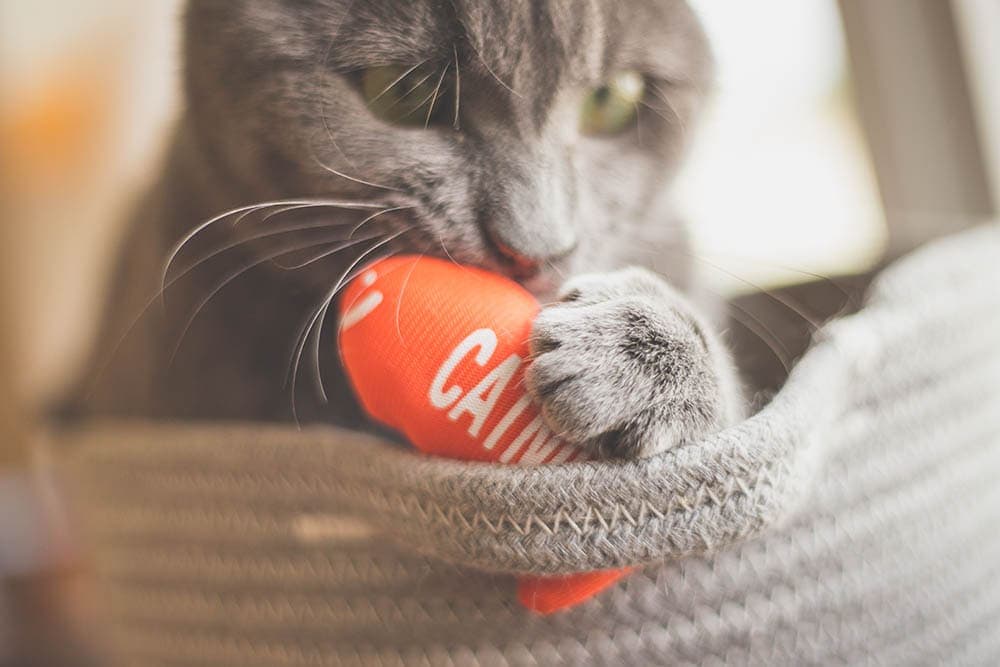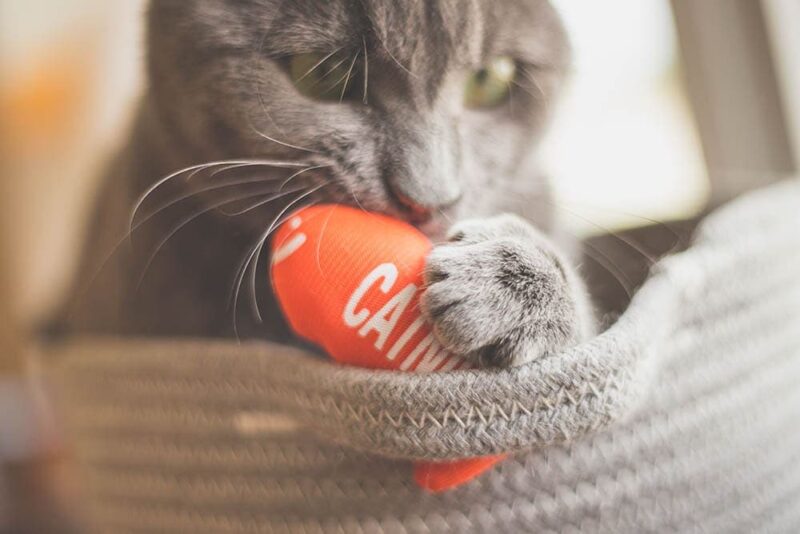Click to Skip Ahead
Many cats love catnip and their reactions are usually quite entertaining. If you’re new to giving catnip to your cat, though, you may be wondering how to do it. We outlined a few ways that you can give catnip to your cat.
Whether they’re rolling around in it, rubbing themselves against it, grooming themselves, or vocalizing, your cat is sure to enjoy the experience!
The 4 Ways to Give Your Cat Catnip
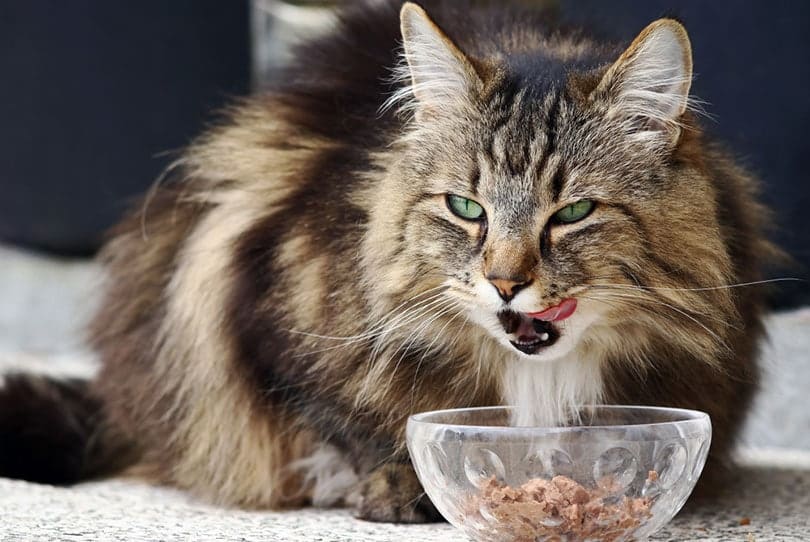
1. Rub Catnip on Toys
Crushing up fresh catnip and sprinkling it on your cat’s toys encourages them to play. Cats are often more active and engaged when their toys smell like catnip.
Lots of cats go bananas for catnip. If your cat is one of them, we recommend Hepper's durable, engaging Catnip Stick Toy! These sturdy toys come in several fun colors and feature bite-proof double bagging and 100% organic catnip fill. They're also handmade in the USA and designed to look like your cat's natural prey.
- No Filler - Like all the best cat toys our is stuffed with 100% organic catnip. Cheap cat toys with...
- Flexible Play - Simple plush shape is great for biting, scratching and pawing. It can start life as...
- Durably Designed - Our cat safe toys are hand-stitched with a double-lined exterior construction for...
At Catster, we’ve admired Hepper for many years and decided to take a controlling ownership interest so that we could benefit from the outstanding designs of this cool cat company!
2. Add Catnip to a Scratching Post
If your cat’s scratching post is collecting dust in the corner, try sprinkling catnip onto the surface to encourage your cat to use it. This will also get them to scratch more and help keep their claws healthy and sharp.
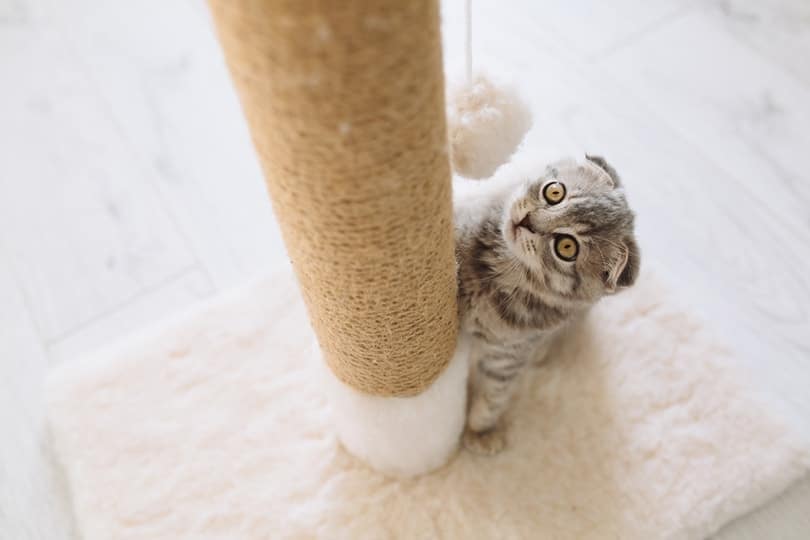
3. Grow Your Own Catnip Plant
Try growing your own catnip plant so you always have it on hand when you need it. Just make sure to keep the plant out of reach of your cat to avoid it being eaten.
4. Make Homemade Catnip Toys
If you’re feeling crafty, why not try this simple plan for homemade catnip toys that your kitty will love?
- ¼ cup of organic catnip
- ½ cup of organic cotton stuffing
- Fabric
- A sewing needle and thread
- Start by mixing the catnip and cotton stuffing in a bowl.
- Once mixed, take small handfuls of the mixture, and form them into little balls.
- Cover each ball with a bit of fabric, and use the needle and thread to sew each one closed. Make sure to knot the thread securely, so the filling doesn’t leak out.
- Give your new catnip toy to your kitty, and watch them have a blast!
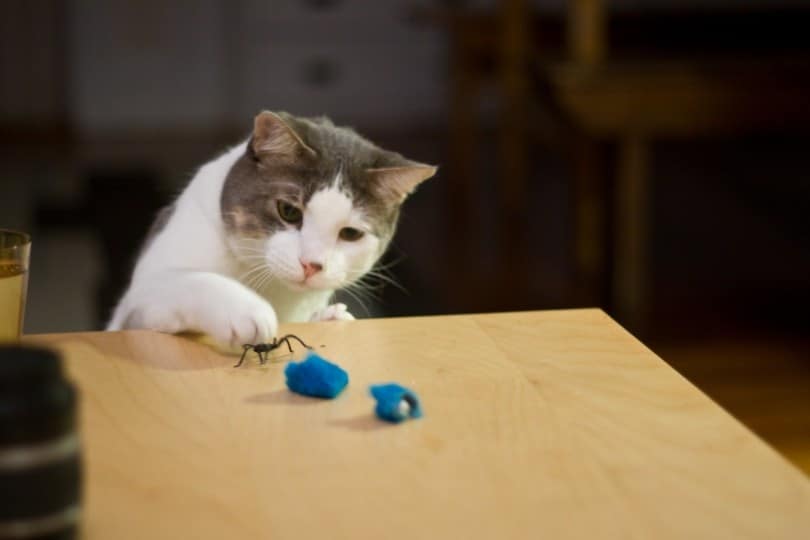
What Is Catnip and Why Is It Used?
Catnip is a member of the mint family, and its scientific name is Nepeta cataria. The plant grows to be about 2 to 3 feet tall and has small, white flowers. The leaves contain the chemical nepetalactone, which is what attracts cats. Approximately 2/3 of cats respond to catnip; when they smell it, they typically roll over, vocalize, or start grooming themselves.
Some cats adore catnip, while others seem uninterested. If your cat doesn’t seem to react at all, don’t worry; there’s no need to force them to like it. The ability to respond to catnip is genetic, so it is totally normal if some cats don’t show any behavioral changes.
While the effects of catnip are usually harmless, some cats may become aggressive when under its influence. If you’re concerned about your cat’s reaction to catnip, it’s best to try it in a controlled environment first, like a small room or play area.
Where to Get Catnip
Catnip can be grown at home, or you can purchase it at most pet supply stores. When shopping for catnip, it’s important to find a good quality brand, like From the Field Stalkless Catnip. You want to ensure that the catnip is fresh and potent, so it’s worth paying extra for a good brand.

Pros and Cons of Giving Your Cat Catnip
Catnip can be a great way to keep your feline friend entertained, but it also has the potential to cause some side effects.
- It’s a natural method of amusement
- It’s safe for cats
- It helps alleviate boredom
- It may help reduce anxiety and pain
- When ingested, it can cause digestive upset.
- It can cause hyperactivity or aggressive behavior
- Side effects include vomiting, diarrhea, dizziness, and difficulty walking
Interesting Facts About Catnip
Here are a few interesting facts about catnip that you may or may not know:
- The plant is native to Europe and Asia but was artificially introduced in North America.
- Catnip is not addictive; most cats lose interest in it over time.
- Kittens under 3 months of age do not seem to react to catnip.
- Cats aren’t the only animals that like catnip; lions and jaguars enjoy it too!
- Nepetalactone, the chemical in catnip that attracts cats, is also used as an insect repellent.
- Catnip is easy to grow and makes a beautiful addition to any garden.
- Dried catnip leaves can be stored in a sealed bag or container for up to 2 years.
- If you have a problem with mice, sprinkle dried catnip around your home. The mice will stay away because they are offended by the strong, musky odor.
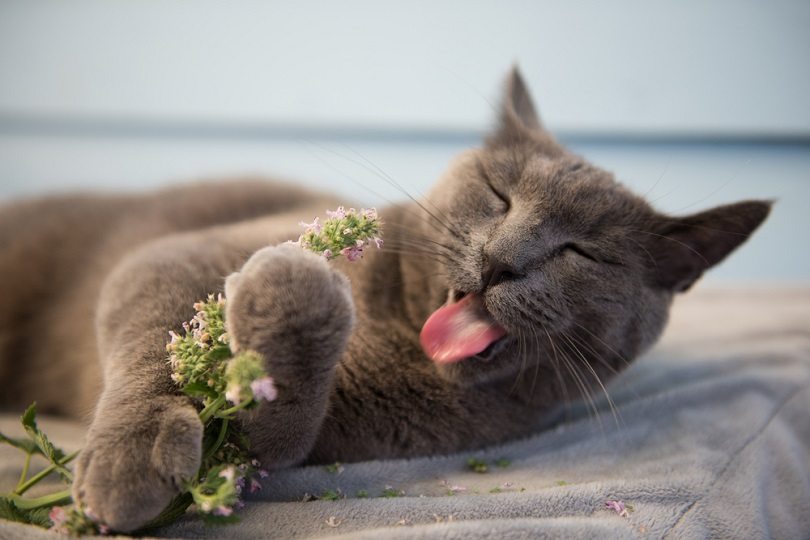
Conclusion
With four different ways to give catnip to your cat, you’re sure to find one that works for you. Whether you grow your own plant or just add it to their toys, it’s easy to administer. It’s a great way to get your cat to exercise, alleviate boredom, and add a little excitement to your cat’s routine!
Featured Image Credit: Ellie Burnett, Shutterstock

